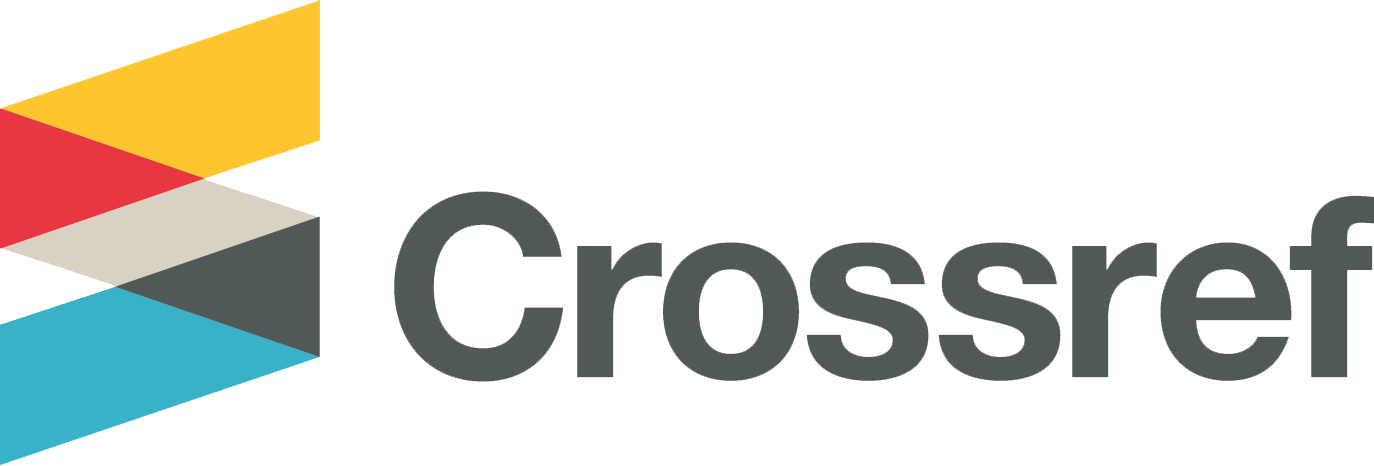Electrophysical properties of chitosan-based composite films filled with single-wall carbon nanotubes
DOI:
https://doi.org/10.33910/2687-153X-2022-3-2-60-65Keywords:
chitosan, nanotube, conductivity, dielectric properties, percolation thresholdAbstract
This work focuses on new chitosan-based composite materials. In order to improve chitosan conductivity, single-wall carbon nanotubes (SWCNT) were added as a filler. The structure of the composites was studied using a scanning electron microscope. It is shown that the addition of SWNCT filler leads to chitosan structure ordering. The increase in SWCNT content from 0 wt.% to 3.0 wt.% leads to an increase in composite film conductivity from 10−11 to 10 S/m, with the relative dielectric permittivity change from 5.5 to 26 at 1 kHz. The effect of moisture on the films’ dielectric properties was also studied.
References
Abarrategi, A., Gutiérrez, M. C., Moreno-Vicente, C. et al. (2008) Multiwall carbon nanotube scaffolds for tissue engineering purposes. Biomaterials, 29 (1), 94–102. https://doi.org/10.1016/j.biomaterials.2007.09.021 (In English)
Bonardd, S., Robles, E., Barandiaran, I. et al. (2018) Biocomposites with increased dielectric constant based on chitosan and nitrile-modified cellulose nanocrystals. Carbohydrate Polymers, 199, 20–30. https://doi.org/10.1016/j.carbpol.2018.06.088 (In English)
Chen, J., Chen, S., Zhao, X. et al. (2008) Functionalized single-walled carbon nanotubes as rationally designed vehicles for tumor-targeted drug delivery. Journal of the American Chemical Society, 130 (49), 16778–16785. https://doi.org/10.1021/ja805570f (In English)
Cheng, J., Meziani, M. J., Sun, Y. P. et al. (2011) Poly(ethylene glycol)-conjugated multi-walled carbon nanotubes as an efficient drug carrier for overcoming multidrug resistance. Toxicology and Applied Pharmacology, 250 (2), 184–193. https://doi.org/10.1016/j.taap.2010.10.012 (In English)
Dobrovolskaya, I. P., Yudin, V. E., Popryadukhin, P. V. et al. (2018) Effect of chitin nanofibrils on electrospinning of chitosan-based composite nanofibers. Carbohydrate Polymers, 194, 260–266. https://doi.org/10.1016/j.carbpol.2018.03.074 (In English)
Dresvyanina, E. N., Grebennikov, S. F., Dobrovol’skaya, I. P. et al. (2020) Effect of chitin nanofibrils on the sorption behavior of chitosan-based composite films. Polymer Science. Series A. Polymer Physics, 62 (3), 205–212. https://doi.org/10.1134/S0965545X20030050 (In English)
Guo, B., Ma, P. X. (2018) Conducting polymers for tissue engineering. Biomacromolecules, 19 (6), 1764–1782. https://doi.org/10.1021/acs.biomac.8b00276 (In English)
Huang, B. (2020) Carbon nanotubes and their polymeric composites: The applications in tissue engineering. Biomanufacturing Reviews, 5 (1), article 3. https://doi.org/10.1007/s40898-020-00009-x (In English)
Kumar, M. N. R. (2000) A review of chitin and chitosan applications. Reactive and Functional Polymers, 46 (1), 1–27. https://doi.org/10.1016/S1381-5148(00)00038-9 (In English)
Liu, Z., Wan, X., Wang, Z. L. et al. (2021) Electroactive biomaterials and systems for cell fate determination and tissue regeneration: Design and applications. Advanced Materials, 33 (32), article 2007429. https://doi.org/10.1002/adma.202007429 (In English)
Lorite, G. S., Ylä-Outinen, L., Janssen, L. et al. (2019) Carbon nanotube micropillars trigger guided growth of complex human neural stem cells networks. Nano Research, 12, 2894–2899. https://doi.org/10.1007/s12274-019-2533-2 (In English)
Lovat, V., Pantarotto, D., Lagostena, L. et al. (2005) Carbon nanotube substrates boost neuronal electrical signaling. Nano Letters, 5 (6), 1107–1110. https://doi.org/10.1021/nl050637m (In English)
Matrenichev, V. V., Popryadukhin, P. V., Kryukov, A. E. et al. (2018) Properties of film materials based on composite nanofibers from aliphatic copolyamide and carbon nanotubes for tissue engineering. Polymer Science. Series A. Polymer Physics, 60, 215–221. https://doi.org/10.1134/S0965545X18020104 (In English)
Maxwell, J. C. (1873) A treatise on electricity and magnetism. Oxford: Clarendon Press, 500 p. (In English)
Mitrofanova, I. V., Milto, I. V., Suhodolo, I. V. et al. (2014) Vozmozhnosti biomeditsinskogo primeneniya uglerodnykh nanotrubok [Opportunities of biomedical use of carbon nanotubes]. Byulleten’ sibirskoj meditsiny — Bulletin of Siberian Medicine, 13 (1), 135–144. https://doi.org/10.20538/1682-0363-2014-1-135-144 (In Russian)
Pan, B., Cui, D., Xu, P. et al. (2009) Synthesis and characterization of polyamidoamine dendrimer-coated multi-walled carbon nanotubes and their application in gene delivery systems. Nanotechnology, 20 (12), article 125101. https://doi.org/10.1088/0957-4484/20/12/125101 (In English)
Stewart, E., Kobayashi, N. R., Higgins, M. J. et al. (2015) Electrical stimulation using conductive polymer polypyrrole promotes differentiation of human neural stem cells: A biocompatible platform for translational neural tissue engineering. Tissue Engineering. Part C: Methods, 21 (4), 385–393. https://doi.org/10.1089/ten.tec.2014.0338 (In English)
Vladkova, T. G. (2010) Surface engineered polymeric biomaterials with improved biocontact properties. International Journal of Polymer Science, 2010, article 296094. https://doi.org/10.1155/2010/296094 (In English)
Xia, X., Zhong, Z., Weng, G. J. (2017) Maxwell–Wagner–Sillars mechanism in the frequency dependence of electrical conductivity and dielectric permittivity of graphene-polymer nanocomposites. Mechanics of Materials, 109, 42–50. https://doi.org/10.1016/j.mechmat.2017.03.014 (In English)
Yang, J., Choe, G., Yang, S. et al. (2016) Polypyrrole-incorporated conductive hyaluronic acid hydrogels. Biomaterials Research, 20 (1), article 31. https://doi.org/10.1186/s40824-016-0078-y (In English)
Downloads
Published
Issue
Section
License
Copyright (c) 2022 Almaz M. Kamalov, Vera V. Kodolova-Chukhontseva, Elena M. Ivan’kova, Margarita E. Borisova, Vladimir E. Yudin

This work is licensed under a Creative Commons Attribution-NonCommercial 4.0 International License.
The work is provided under the terms of the Public Offer and of Creative Commons public license Creative Commons Attribution 4.0 International (CC BY 4.0).
This license permits an unlimited number of users to copy and redistribute the material in any medium or format, and to remix, transform, and build upon the material for any purpose, including commercial use.
This license retains copyright for the authors but allows others to freely distribute, use, and adapt the work, on the mandatory condition that appropriate credit is given. Users must provide a correct link to the original publication in our journal, cite the authors' names, and indicate if any changes were made.
Copyright remains with the authors. The CC BY 4.0 license does not transfer rights to third parties but rather grants users prior permission for use, provided the attribution condition is met. Any use of the work will be governed by the terms of this license.







